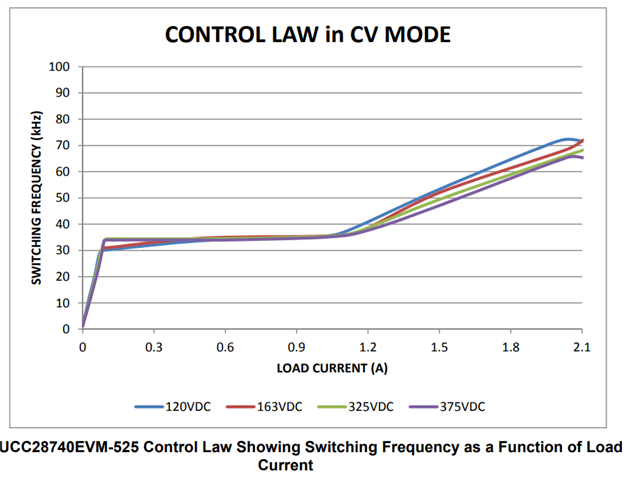Hello,
I would like to calculate some parameters on UCC28710 and must make sure a behavior of frequency at some load conditions.
My question is:
a)In my understanding, the below condition is needed for starting constant-current mode. Is it correct?
-Either the Switching frequency must be reached to 100kHz or the Dmag must be reached to duty cycle 0.425.
-The drain current of primary MOSFET must be reached IPP max.
b)If it is correct, in the case of 66kHz being set to target full-load maximum switching frequency, the constant-current mode of output load becomes set at 150% of nominal. Is it correct?
c)If it is correct, how is the below tolerance?
-DMAGCC (0.425 +? -?)
-The switching frequency on the amplitude modulation mode area (33kHz +? -?)
d)What is the" fMIN" on section 12.1.2.3 of the datasheet? And how do I calculate it?
e)What is "VCCR"? Is this minimum of VCST at the constant-current mode? For example, which implies the condition of around 2V on figure 18's lowest point of output voltage.
Best regards,
Shintaro



